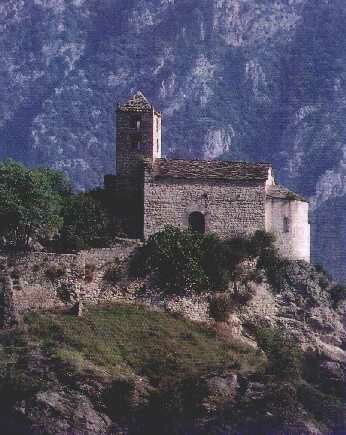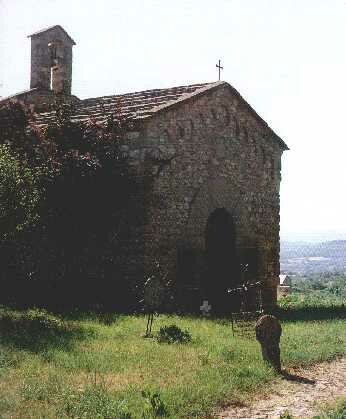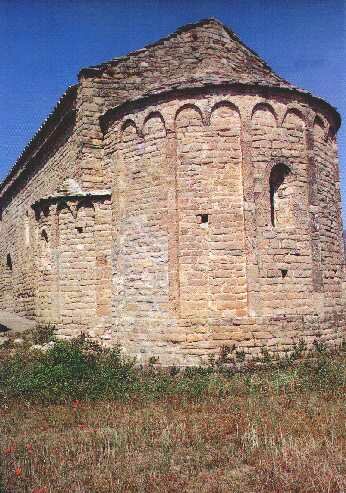|
The route of the Corb. This itinerary, to do on foot, is properly signalized and it will allow us to know some the paradisíacos places of the term of Peramola. One leaves this villa and it is continued by the Grau de Porta, until the imposing rock of the Corb, formed by conglomerates of type montserratíno. The excursion continues around the rock, to return later by the same initial way until Peramola
The Romanesque one. The small church of Sant Miquel de Peramola, located in the low part of the villa, is a building of a single ship, very short, cover with return of tube and finished to the East with a semicircular apse opened to the ship directly. The door, located in the facade the west, has an arc of average point adovelado and flanked by two rectangular windows. There are two windows more, one of double spill in the center of the apse and another one in the South wall, of a single spill. The apse is ornamented externally with friso of lombardos arcs, that repeat to the facade the west. Santa Maria de Castell-Llebre, located at the top of a rocky knoll, emphasizes by her bell tower of square base and geminadas windows. The place of Castell-Llebre (Kastro Veteri) appears mentioned for the first time in a document of year 942, whereas in year 995 we already found references of a consecrated church to Santa Maria. The church, located in the top of a rocky knoll, is a building of a single ship covered with vault of tube of pointed profile and reinforced by two torales arcs. In the apse, of prolonged semicircular base, to two windows of double spill and one small opening are opened on the arc of communication with the ship. There are three doors, the main one finished with a adovelado arc. The bell tower is a tower of square base with two floors that excel over the ship and windows geminadas to four winds. Santa Llúcia de Tragó (Draago) is specially remarcable by her trevolada head. The church of Swallowed (Dragon tree) appears documented year 1279 for the first time. Before being dedicated to Santa Llúcia it had been under the invocations of Our Lady of the Roser and Santa Maria of the Pla de Tragó. It is a building of a ship, cover with vault of followed tube, section semicircular and reinforced by two torales arcs. The head, in form of trébol, is formed by a central apse and two lateral absidiolos of reduced dimensions more. In the center of each apse there is a centered window of double spill. One fourth window, in the west facade conserves painting vestiges mural. The door is opened in the South facade, with a adovelado arc. The bell tower, located to the west, is simple espada6na of a single eye.
The artisan cheese. In the house of the Penella, located to the north of the term, they artisan process cured cheese and of "tupí"... as well as of it killed, that is commercialized with the mark "Castell-Llebre". The people in charge of this familiar and artisan industry are Fermi Tordesillas and Anna Garate. We cannot forget that their cheeses have been winning of awards in some of editings of the "Fira de Formatges Artesans of the Pirineu", as well as in other samples of similar characteristics in the rest of the Spanish state. Also visits commented of half an hour for groups of 2 to 20 people are made. Previously it is necessary to arrange hour telephoning to . These products also comprise of the exquisite gastronomical supply of the municipality.
|
|
 |
|
Castell-Llebre. (Clicad to see the greatest image).
|
 |
|
Sant Miquel de Peramola. (Clicad to see the greatest image).
|
 |
|
Santa Llúcia de Tragó. (Clicad to see the greatest image).
|
|